|
A Key to the superfamilies of the Lepidoptera
with special reference to North and South Dakota
| Family
Sphingidae,
Hawkmoths, Hummingbird moths, or Sphinx moths, have the abdomen extending
beyond the wings for at least 1/2 of its' length, hindwings smaller than the
forewings, frenulum present, antennae rarely bipectinate. There are 1,050
species worldwide and about 130 in North America.
At right: fasciculate antenna of Manduca quinquemaculata (Haworth)
(top), clavate antennae of Hyles lineata (Fabricius) (middle) and
bipectinate antennae of Smerinthus jamaicensis (Drury) (bottom);
ventral view of Sphinx gordius Cramer- arrow indicating frenulum;
center right Sphecodina abbottii (Swainson) with normal proboscis,
far right Paonias myops (J.E. Smith) with atrophied proboscis. |

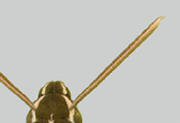
 |

|


|



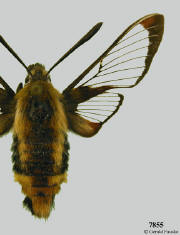
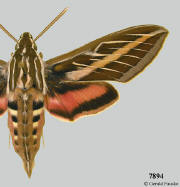
From left to right: Agrius cingulatus (Fabricius), Sphinx vashti
Strecker, Paonias excaecatus (J. E. Smith),
Hemaris diffinis (Boisduval) and Hyles lineata (Fabricius). |
| |
| Family Bombycidae
(including Apatelodidae) Silk moths, have atrophied
mouthparts bipectinate antennae, a frenulum, and M1
stalked with Rs on hw. There are 250 species worldwide and five in North
America. From left to right: Apatelodes torrefacta (J.E.
Smith) venter showing frenulum and habitus, Bombyx mori (Linnaeus),
habitus. |


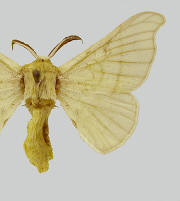 |
| |
| Family
Saturniidae,
Giant silk moths, have atrophied mouthparts, lack a frenulum, usually
possess quadri-pectinate antennae and often, an ocellatus on each wing.
There are about 1,300 species worldwide and at least 72 in North America. |

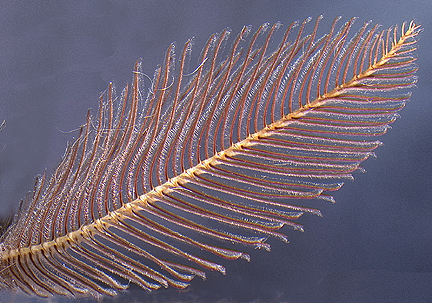
|
| 

|
 |
 |
Top center: venter of Dryocampa rubricunda (Harris), arrow indicating
humeral lobe; top right: quadripectinate antenna of male
Antheraea polyphemus (Cramer); top left: close-up of same; bottom left,
quadripectinate antennae of Coloradia doris Barnes;
center: bipectinate antennae of Hemiluca nevadensis Stretch; lower
right: antenna of Dryocampa rubricunda, quadripectinate
on basal 2/3, simple to apex.
|




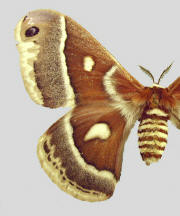
From left to right: Dryocampa rubricunda (Harris), Automeris io
(Fabricius),
Coloradia pandora (Blake), Acias luna (Linnaeus),
Hyalophora gloveri (Strecker) |
| ________ |
|
| Note: Family Senaturidae,
of the Geometroidea which lacks a tympanum will key to this couplet.
These moths have hairy eyes and clavate antennae. See couplet
15b.
|
|
Return to preceding
page
Return to beginning of
Key
Return to Key introduction
|
